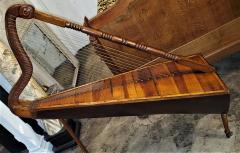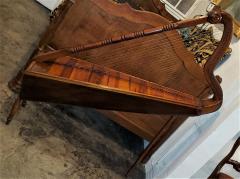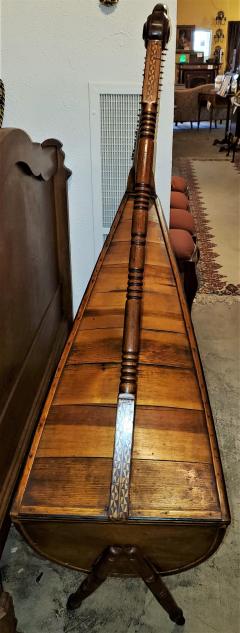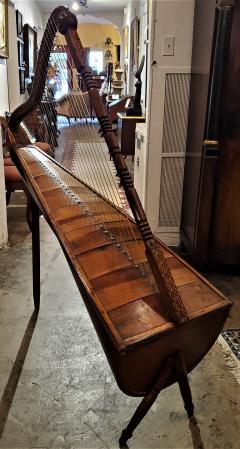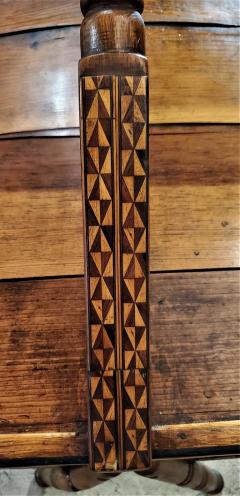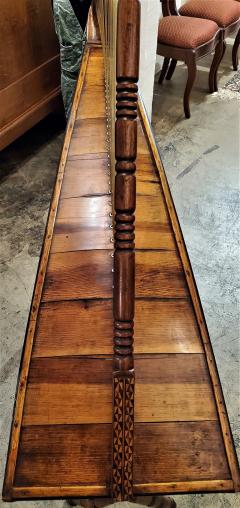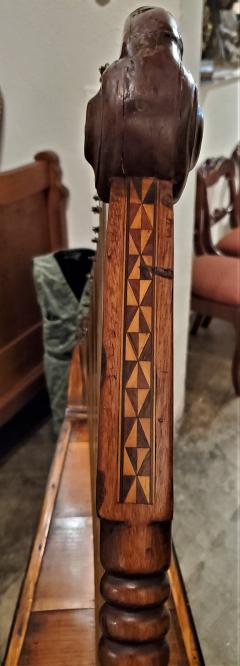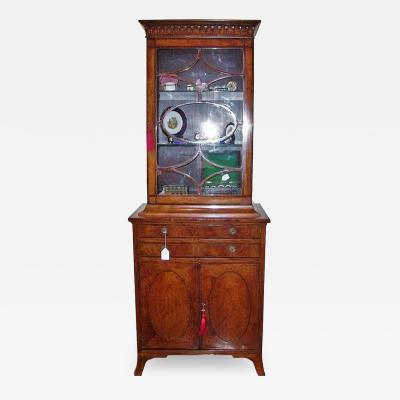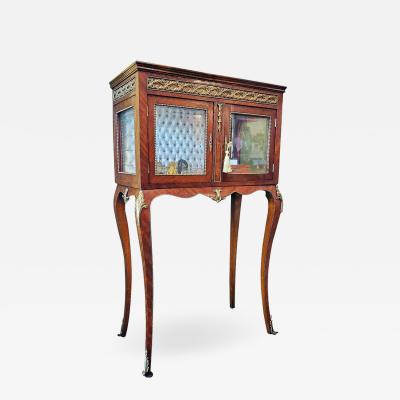19th Century Jalisco Mexican Harp
-
Description
Presenting a stunning 19th century Jalisco Mexican Harp.
Made in Mexico circa 1880 of walnut and maple. This is what is commonly referred to as a Jalisco Harp (see history later in the post).
It is in good working condition but could probably use a professional tuning and tightening.
37 strings in total.
Different in style and design than French, British or Classic Irish free standing harps.
This harp is nicer than most other models we have seen with glorious micro mosaic geometric parquetry inlay on the front. A turned support and 2 tone patina on the motherboard base.
Harp history in Latin America
“The harp was introduced into the Spanish colonies of North, Central and South America by the Spaniards. Three different styles were introduced over the centuries from the conquest through the 19th century, reflecting the evolution of the harp in Spain and Europe. These harps varied not only in size but also in the shape and placement of sound holes, and how the feet are integrated into the harp.
First to come over was a small, slender model with approximately 22-29 strings, in the XVI, XVII and XVIII centuries. Harps of this style can be seen European paintings of that era. These harps are characterized by such details as the slender body, shape and placement of the sound holes on the top and twin animals on the neck of the harp. Feet were merely an extension of the base of the harp. Harps of this style found their way into certain indigenous cultures and areas and may still played today in areas such as Sonora and remote indigenous communities.
In the 19th century yet another model was introduced, in which the sound holes were moved to the back of the body, or sometime to the base, and the harps were designed such that, unlike the previous two styles, they could Stand up, resting on the base. It resembles a modern pedal harp, but in miniature and without the pedals. This style is found in Zacatecas and surrounding areas, and is not as widely distributed as the previous styles, perhaps owing to its later introduction.
MEXICAN HARPS
Mexico as a country has more variations on the harp than any other country. There exist many distinct forms and traditions with the various indigenous and mestizo cultures. Some of the more common ones are Veracruz, Michoacán, Jalisco and Chiapas: In addition, many other styles of harps and playing exist, including (but not limited to) the traditions of, Sonora, Zacatecas, and Chihuahua. More information can be found in “ATLAS CULTURAL de MEXICO – MUSICA” written by Juan Guillermo Contreras Arias and published by INAH in Mexico City.
THE JALISCO HARP
The Jalisco harp as we know it today has remained essentially unchanged for at least two centuries. It is a large harp, with the feet formed from the same piece of wood that is the base of the sound box, typically with four staggered sound holes in the top. While 36 is the “normal” number of strings it is possible for it to have fewer or even more than that number. Its top is made of a local soft wood known as tacote or rabelero, and the sides of the box are typically cedar, though other woods can be incorporated. The neck and pillar are of either ash, cedar or mahogany. The shape of the neck is relatively flat, when compared to most other harps. Originally the strings were made of gut, with the bass strings also being unwound. Starting in the 1950s, the gut strings were gradually replaced by nylon, with the bass strings being nylon wrapped on either a solid nylon core, or sometimes on nylon fibers. It is often played standing up. When played in a mariachi, one of its main functions is to play the bass line, and the harp is, in fact, much older than the guitarrón, an instrument that developed and evolved in the late 19th and early 20th centuries. With the appearance of the guitarrón, two distinct ensembles were possible, that of the harp and guitarra de golpe along with violins, and that consisting of guitarrón, vihuela and violins.
The 20th century saw the merging of these two instrumentations and the addition of the trumpet to the ensemble, and a gradual increase from a size of 4 musicians to as many as 12 or more. In the larger mariachis of the 1950s forward, the harp’s roles were duplicated by other instruments, notably the guitarrón, and a decline in the use of harps started. By the 1980s, few groups were using harps. Fortunately, the 1990s saw a resurgence of interest in the harp, and now many mariachis are once again incorporating harp as a part of the ensemble.” -
More Information
Origin: Mexico Period: 19th Century Materials: Walnut, Maple, Pine Condition: Fair. Repair to neck. Repair to one of the legs and the hinged support is a later replacement. Minor structural damages. Good condition for it’s age and use. Repair to neck. Repair to one of the legs and the hinged support is a later replacement. Creation Date: 1880 Styles / Movements: Americana, Traditional Incollect Reference #: 432564 -
Dimensions
W. 18 in; H. 57 in; D. 52.5 in; W. 45.72 cm; H. 144.78 cm; D. 133.35 cm;
Message from Seller:
Rockwell Antiques, located at 1500 Market Center Blvd., Dallas, TX 75207, specializes in high-end antiques, fine art, and collectibles from around the world. Contact us at 972.685.0808 or rockwellantiquesdallas@gmail.com to explore our personally curated treasures with rich provenance and history.
Sold

















